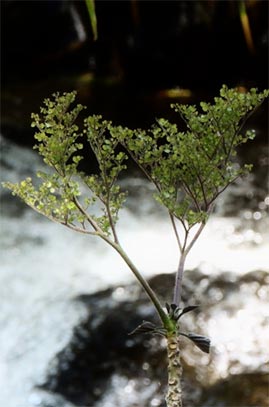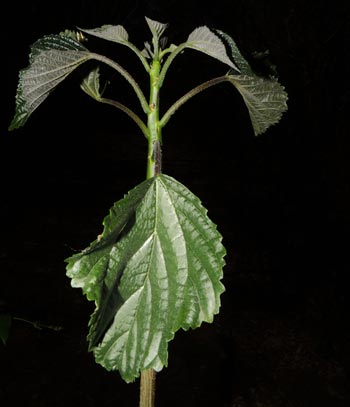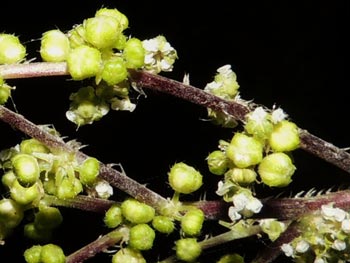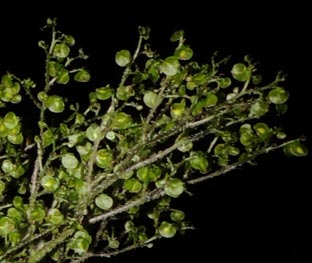 |
QUICK SEARCH
MO PROJECTS:
Africa
Asia/Pacific
Mesoamerica
North America
South America
General Taxonomy
Photo Essays
Training in Latin
America
MO RESEARCH:
Wm. L. Brown Center
Bryology
GIS
Graduate Studies
Research Experiences
for Undergraduates
Imaging Lab
Library
MBG Press
Publications
Climate Change
Catalog Fossil Plants
MO DATABASES:
W³MOST
Image Index
Rare Books
Angiosperm
Phylogeny
Res Botanica
All Databases
INFORMATION:
What's New?
People at MO
Visitor's Guide
Herbarium
Jobs & Fellowships
Symposium
Research Links
Site Map
Search
|
Draft Treatments | Guidelines | Checklist | Citing | Editors The Cutting EdgeVolume XXI, Number 2, April 2014News and Notes | Leaps and Bounds | Germane Literature | Season's Pick SEASON'S PICK: We might easily be accused lately of featuring rather humble plants, arguably ugly (even nasty!) in the case of this season's featured sp., Discocnide mexicana (Liebm.) Chew (Urticaceae).
But after all, we are botanists and we can always find a good story for even the ugliest of ducklings. This rare plant, easily mistaken for one of the strongly urticating spp. of Urera [e.g., U. baccifera (L.) Gaudich.], until recently was known in Costa Rica from just one collection, Bello 828, gathered almost exactly 25 years ago. Thanks to the work of José Esteban Jiménez, UCR student and current holder of the much-coveted title Botanical Explorer Extraordinare [see, e.g., Iridaceae, under "Leaps and Bounds, in The Cutting Edge 20(2), Apr. 2013], we now have photos and a second gathering (J. E. Jiménez & Díaz 81) of this unusual sp., from the same locality as the Bello specimen. As often is the case, our knowledge of this rediscovery is due to a bit of serendipity: Manual co-PI Barry Hammel, having glanced at recently mounted specimens waiting to be filed, and having just dealt with D. mexicana for the purposes of an illustration for the Manual, noticed the aforementioned misidentification that might otherwise have left the specimen lost for years in the Urera folder. Even in fruit, the mistake for Urera is understandable; in dried material, the drupelike diaspores (achenes covered by the accrescent and succulent perianth) of said genus are virtually always flattened anyway. And yes, we did check through all the Urera folders to make sure no other such cases of mistaken identity had slipped in. And what else is so noteworthy about this sp.? Other than the Monteverde locality being its southernmost extension, the sp. (and monospecific genus) is apparently distinct from "all the rest of Urticaceae...[for its achenes that] are very flat, round and disc-like; and the walls are so very thin and papery that the very slender seed is clearly visible through them" (Chew, 1965; Bot. Gard. Bull. Singapore 21: 167). The meek (and urticating) will inherit the earth! |
© 1995-2025 Missouri Botanical Garden, All Rights Reserved
4344 Shaw Blvd.
St. Louis, MO 63110
(314) 577-5100
Technical Support



